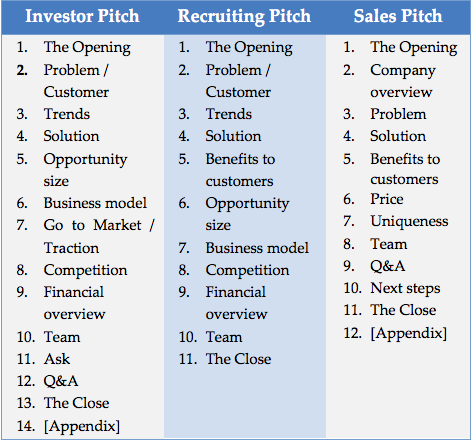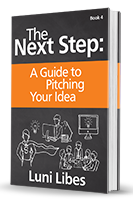How can you tell when an entrepreneur is pitching? Her lips are moving.
To recruit a team, you need a “pitch.”
To raise money, you need a “pitch.”
To sell your product, you need a “pitch.”
The recruitment pitch explains why the product will sell and why the company is/will be a great place to work. The fundraising pitch explains why the product will sell, why the team can execute, and how the company will make a profit. The sales pitch explains the benefits of the product to the customer and how it will save them time, how it will make them money, or other reasons to buy the product.
Each of these pitches is a ten to fifteen-slide presentation, presentable in fifteen to twenty minutes.
These three presentations overlap in content but are not identical. When creating each of these presentations, put yourself in the shoes of the audience member and answer the questions they would have. Why should I work there? Why should I invest? Why should I buy? And remember the common theme: “What’s in it for me?”
With tens of thousands of unique pitches presented each year, audiences have become accustomed to common patterns in these presentations. Specific topics are expected by the audience, and, if these elements are missing, many audience members will consciously or unconsciously find the presentation less effective.
RULE 4:
Know what the audience expects from you.
The expectations include the following topics (with one to two slides per topic):

The order of these topics is not set in stone. Some investors have passionately argued that the Team slide should be the second slide. Others say, Opportunity. Some care for details only on the product; some want details on financials. In short, each person you pitch will differ in what they think is the most important part of the pitch.
Understand that you can’t satisfy everyone. However, note that there is no rule that says you have to have just one pitch. You can add or subtract content as needed to better meet the needs of the next audience, and similarly you can swap the order of the slides when that best matches the expectations of the crowd.
Further Reading
The Art of the Start by Guy Kawasaki













